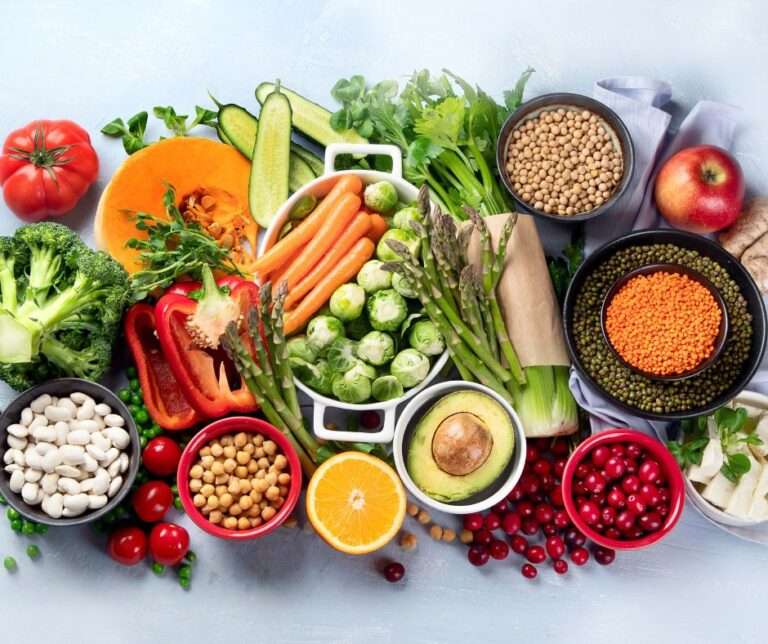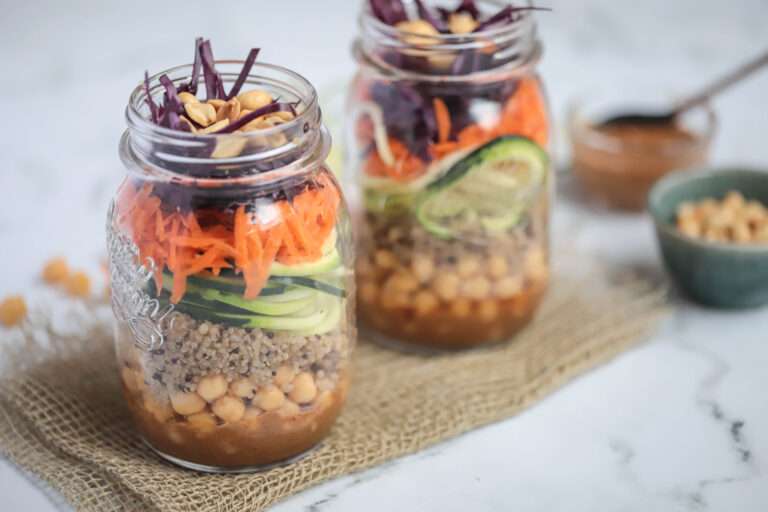In our increasingly health-conscious society, fresh produce is often lauded as the pinnacle of nutrition. We’re frequently encouraged to fill our shopping carts with a rainbow of fresh fruits and vegetables. But what if the key to optimal nutrition, convenience, and weight loss lies not in the fresh produce aisle, but in the frozen food section? It may come as a surprise to many, but there are instances when the Best Frozen Vegetables for Weight Loss can actually be a superior choice to their fresh counterparts.
The notion that fresh is always best is deeply ingrained in our collective consciousness. However, it’s time to debunk this myth and shed light on the benefits of frozen vegetables. In this blog post, we will delve deeper into the science behind these claims. We’ll explore the nutritional comparison between fresh and frozen vegetables, the benefits of including the Best Frozen Vegetables for Weight Loss in your diet, and why they can sometimes be the healthier, more nutritious option. So, before you bypass the frozen food aisle on your next grocery run, read on to discover why frozen could be the way to go.
Nutritional Comparison: Fresh vs Frozen Vegetables
When it comes to nutrition, both fresh and frozen vegetables have a lot to offer. However, the key difference lies in how these nutrients are preserved from the time of harvest to the time they reach your plate.
Fresh Vegetables: A Closer Look
Farm-fresh vegetables indeed pack a wide array of vitamins and minerals. However, remember that these nutrients start to degrade immediately after the harvest. Factors such as light, heat, and time can cause significant nutrient loss. For instance, a study found that green peas lost nearly half of their vitamin C within 24 to 48 hours of harvesting.

Frozen Vegetables: The Cold, Hard Facts
On the other hand, frozen vegetables are usually picked at peak ripeness and flash-frozen within hours of being harvested. This process effectively ‘locks in’ many of the nutrients, ensuring that the vegetables retain their nutritional value. A review of studies found that the levels of Vitamin A, Vitamin C, and folates in frozen vegetables were comparable to, and occasionally higher than, their fresh counterparts.
The Benefits of Including Frozen Vegetables in Your Diet
Including frozen vegetables in your diet comes with a host of benefits.

Convenience and Versatility
Firstly, they offer unparalleled convenience. Pre-washed and pre-cut, frozen vegetables save you the time and effort of preparation. They are also available year-round, allowing you to enjoy your favorite vegetables regardless of the season.
Reducing Food Waste
Secondly, frozen vegetables can help reduce food waste. Unlike fresh vegetables, which can spoil quickly, frozen vegetables have a long shelf life. You can use just the amount you need and keep the rest for later, reducing waste.
Why Frozen Can Be the Healthier, More Nutritious Option
Given the nutritional comparison and the practical benefits, it’s clear that frozen vegetables can sometimes be the healthier, more nutritious option. They offer a convenient, waste-free way to include a variety of nutrient-rich vegetables in your diet, regardless of the season. Moreover, the freezing process ensures that these vegetables retain their nutritional value from the farm to your plate, making them a worthy addition to any meal.
The Super Six: Best Frozen Vegetables for Weight Loss
1. Broccoli: The Green Superhero
Broccoli, often referred to as a “green superhero,” is a nutrient-dense vegetable that offers a multitude of health benefits. According to the USDA, a cooked cup of broccoli provides over 5 grams of fiber, contributing to digestive health and satiety. A 2023 review published in the journal Antibiotics delved into the health benefits of broccoli. The study highlighted broccoli’s rich content of vitamins A, C, and K, minerals such as calcium, potassium, and iron, and a host of antioxidants and bioactive compounds.

Bioactive Compounds in Broccoli
One of the key bioactive compounds in broccoli is glucosinolates. As the study states, “Glucosinolates are sulfur-containing compounds that give cruciferous vegetables their distinctive aroma and taste.” When we chew broccoli, these glucosinolates are broken down into active compounds like sulforaphane and indole-3-carbinol. Sulforaphane, according to the study, “has been shown to have anti-cancer, anti-inflammatory, anti-aging, neuroprotective, and anti-diabetic properties.” Indole-3-carbinol also has potential anti-cancer properties. These compounds work by neutralizing harmful free radicals in the body, reducing inflammation, and potentially lowering the risk of certain cancers.
Read More: THE POWER OF GREEN: UNLEASHING THE HEALTH BENEFITS OF BROCCOLI!
Cooking Suggestions for Broccoli
You can tailor the simple process of cooking broccoli to your individual taste preferences. You can choose to steam, roast, stir-fry, or even eat it raw. Steaming helps retain the maximum amount of nutrients. To steam broccoli, simply add it to a steamer basket over boiling water and cook until tender. For a more flavourful option, roasting broccoli with a drizzle of olive oil, salt, and pepper caramelizes the edges and brings out a delicious, slightly sweet flavor. Stir-frying broccoli in a bit of oil with garlic and your favourite spices makes for a quick, nutrient-packed side dish. Regardless of the method, cooking broccoli until it’s just tender-crisp will help maintain its nutrient content and vibrant green colour.
2. Butternut Pumpkin: The Time-Saver
Butternut squash, a winter squash variety, is not only a time-saver in the kitchen but also a nutrient-dense addition to your meals. According to the USDA, frozen butternut squash is rich in beta carotene, fiber, vitamin C, and potassium.

Health Benefits of Butternut Squash
Beta Carotene: This is a precursor of vitamin A, which is essential for maintaining the health of the eyes and immune system. A 2016 study published in the journal Nutrients states, “Butternut squash is a rich source of beta carotene, a precursor of vitamin A, which is essential for maintaining the health of the eyes and immune system.” Fiber: The fiber content in butternut squash can help to promote feelings of fullness, which can aid in weight management. Vitamin C: This nutrient plays a crucial role in immune function and skin health. Potassium: Potassium is important for heart health and muscle function. Complex Carbohydrates: Butternut squash is also a good source of complex carbohydrates. A 2018 review in the journal Nutrients notes that complex carbohydrates, like those found in butternut squash, can help to regulate blood sugar levels and support gut health.
Cooking Suggestions for Butternut Squash
You can use butternut squash in a variety of cooking methods due to its incredible versatility. When you roast butternut squash, you enhance its natural sweetness, turning it into a delicious side dish. By steaming butternut squash, you can mash it and serve it as a healthier alternative to mashed potatoes. Pureeing butternut squash creates a creamy base for soups and can also add moisture and sweetness when used in baking.
Make: CURRIED BUTTERNUT SQUASH AND APPLE SOUP RECIPE
3. Cauliflower: The Versatile Veggie
People know cauliflower, a versatile vegetable and a close relative of broccoli, for its numerous health benefits. It’s low in calories and carbohydrates, making it a popular substitute for grains and legumes in many diets. According to the USDA, a cup of raw cauliflower provides about 27 calories and 5 grams of carbohydrates, of which 2 grams are dietary fiber. This high fiber content can support digestive health and promote feelings of fullness, aiding in weight loss.

Health Benefits of Cauliflower
Like broccoli, cauliflower is a cruciferous vegetable rich in glucosinolates, sulfur-containing compounds that have been studied for their anti-cancer properties. The journal Nutrients published a 2019 review stating, “Epidemiological studies demonstrate that a high dietary intake of cruciferous vegetables correlates with a reduced risk of several types of cancer.” Additionally, cauliflower provides a good source of antioxidants, including vitamin C, which can aid in reducing inflammation and protecting against chronic diseases. The journal Antioxidants published a 2017 study indicating that cauliflower contains a variety of antioxidant compounds, such as carotenoids and flavonoids, which “exhibit anti-inflammatory, antidiabetic, anticancer, neuroprotective, and immune-boosting effects.”
Cooking with Cauliflower
When it comes to cooking cauliflower, its versatility truly shines. It can be roasted, steamed, mashed, or even riced to create a low-carb alternative to grains. To roast cauliflower, toss it in olive oil, season with salt and pepper, and bake until golden and crispy. Steaming cauliflower preserves its nutrients and provides a tender texture, perfect for mashing as a substitute for potatoes. Cauliflower rice, made by pulsing raw cauliflower in a food processor until it resembles grains of rice, can be sautéed with a bit of oil and your favorite seasonings for a quick and healthy side dish.
4. Green Beans: The Year-Round Staple
Green beans, a staple in many households, are a nutrient-rich vegetable that can be enjoyed year-round. According to the USDA, a 1-cup serving of frozen green beans contains 3 grams of fiber and 2 grams of protein. This combination of fiber and protein can help to promote feelings of fullness, which can aid in weight management.

Nutritional Benefits of Green Beans
Green beans are also a good source of vitamins and minerals. A 2017 study published in the journal Nutrients highlights the high content of vitamin C, vitamin K, and manganese in green beans. These nutrients play crucial roles in bone health, wound healing, and the metabolism of carbohydrates, proteins, and cholesterol. Moreover, green beans are rich in antioxidants, including flavonoids and carotenoids, which have been associated with a reduced risk of chronic diseases. A 2015 study in the Journal of Agricultural and Food Chemistry states, “Green beans are a good source of phenolic compounds, especially flavonoids, which have been shown to have antioxidant, anti-inflammatory, and anticancer properties.“
Cooking with Green Beans
When it comes to cooking green beans, they are incredibly versatile. They can be steamed, boiled, stir-fried, or roasted. Steaming or boiling green beans until they are tender-crisp helps to preserve their vibrant color and nutrient content. For a flavorful side dish, green beans can be stir-fried with garlic and a splash of soy sauce. Roasting green beans with a bit of olive oil, salt, and pepper gives them a deliciously crispy texture and a slightly caramelized flavor.
5. Spinach: The Nutrient Superstar
Spinach, often hailed as a nutrient superstar, is a versatile vegetable that offers a wealth of health benefits. According to the USDA, frozen spinach is low in calories but high in fiber, making it a great choice for those looking to manage their weight.

Nutritional Profile
In addition to fiber, spinach is packed with vitamin C, iron, and folate. A 2013 study published in the Journal of Agricultural and Food Chemistry states, “Spinach is a rich source of folate and iron, and consumption of spinach could contribute to the recommended dietary intake of these essential nutrients.” Spinach also contains a decent amount of protein for a vegetable. A 2018 review in the journal Nutrients notes that spinach is a good source of plant-based protein, which can support muscle growth and repair. Moreover, spinach is rich in antioxidants, including lutein and zeaxanthin, which are known for their eye health benefits. A 2017 study in the journal Nutrients states, “Lutein and zeaxanthin, found in high concentrations in spinach, have been shown to reduce the risk of age-related macular degeneration and cataracts.”
Cooking with Spinach
You can use spinach in a variety of dishes when cooking. Sauté it with garlic and olive oil for a simple side dish, add it to soups and stews for a nutrient boost, or blend it into smoothies for a hidden serving of vegetables. Spinach also fits well in baked dishes like lasagna or quiche, and you can even use it as a pizza topping. In conclusion, you can easily incorporate this nutrient-dense vegetable into a variety of dishes, making spinach a valuable addition to any diet.
6. Green Peas: The Protein Powerhouse
Green peas, a common household staple, are a powerhouse of nutrients. According to the USDA, a 1-cup serving of green peas provides 7 grams of protein and 6 grams of fiber. This combination of protein and fiber is excellent for promoting feelings of fullness, which can aid in weight management.

Nutritional Benefits of Green Peas
In addition to being high in protein and fiber, green peas are also a good source of vitamins and minerals. A 2012 study published in the Journal of Functional Foods highlights the high content of vitamin C, vitamin A, and manganese in green peas. These nutrients play crucial roles in immune function, vision, and the metabolism of carbohydrates, proteins, and cholesterol. Moreover, green peas are rich in antioxidants, including flavonoids and carotenoids, which have been associated with a reduced risk of chronic diseases. A 2017 study in the journal Nutrients states, “Green peas are a good source of phenolic compounds, especially flavonoids, which have been shown to have antioxidant, anti-inflammatory, and anticancer properties.”
Read More: GREEN PEAS: THE VEGGIE WITH AMAZING HEALTH BENEFITS YOU’VE BEEN IGNORING!
Cooking with Green Peas
When it comes to cooking green peas, they are incredibly versatile. They can be steamed, boiled, or added to soups, stews, and casseroles. Steaming or boiling green peas until they are tender helps to preserve their vibrant color and nutrient content. For a simple side dish, green peas can be sautéed with a bit of butter, salt, and pepper. They also make a great addition to pasta dishes, salads, and stir-fries.
Make: AVOCADO AND PEA SMASH: NOT YOUR AVERAGE AVO TOAST
Tips for Choosing the Best Frozen Veggies for Weight Loss
When it comes to selecting frozen vegetables for weight loss, it’s crucial to pay attention to the ingredients list. Ideally, the list should only contain the vegetable(s) and no additional ingredients. Pre-seasoned blends often contain added fats and salt, which can increase the calorie content and potentially hinder your weight loss efforts.
A study published in the American Journal of Clinical Nutrition in 2016 found that “Consumption of processed foods high in fat and salt is associated with weight gain”. Therefore, opting for unseasoned frozen vegetables allows you to control the amount of fat and salt you consume.
Adding Healthy Seasonings
After cooking your vegetables, you can add your own seasonings to match your taste preferences and health goals. Olive oil, for instance, is a healthy fat that can enhance the flavor of your vegetables without adding excessive calories. A review in the journal Nutrients in 2017 noted that “olive oil, a key component of the Mediterranean diet, has been associated with numerous health benefits, including weight management”.
Salt and pepper are classic seasonings, but be mindful of your salt intake as excessive consumption can lead to high blood pressure. Herbs and spices, such as garlic, rosemary, and turmeric, not only add flavor but also offer health benefits. For example, a study in the Journal of Medicinal Food in 2017 stated, “Turmeric and its active compound curcumin have been shown to have anti-inflammatory and antioxidant properties, which can support overall health”.
Read: 6 FOODS YOU SHOULDN’T CUT OUT IF YOU’RE TRYING TO LOSE WEIGHT
The Bottom Line
Frozen vegetables are a nutrient-rich, convenient addition to your kitchen arsenal, whether your goal is weight loss or not. They contain the same nutrients as their fresh counterparts and are extremely versatile in the kitchen. Be sure to add your favourite frozen vegetables to your next grocery haul to reap the benefits these produce picks provide year-round. Remember, sustainable weight loss is a journey, not a sprint. Incorporating these plant-based weight loss tips into your routine can help you achieve your goals while enjoying delicious and nutritious meals.
Read: THE SECRET TO REALISTIC WEIGHT LOSS GOALS: DISCOVER HOW TO LOSE WEIGHT EFFECTIVELY!





